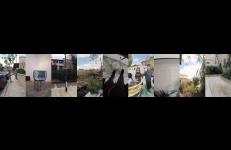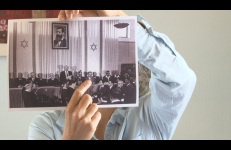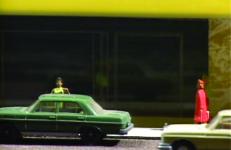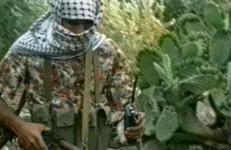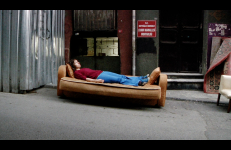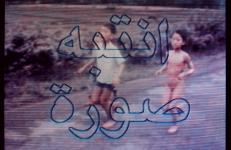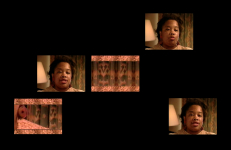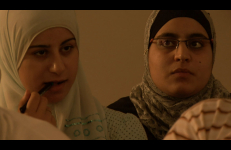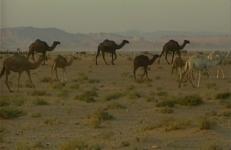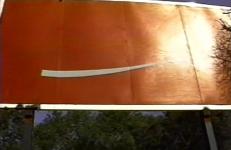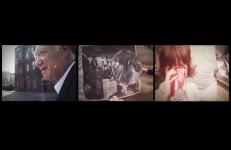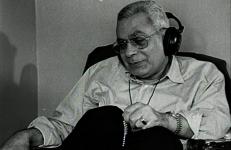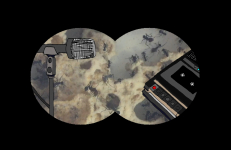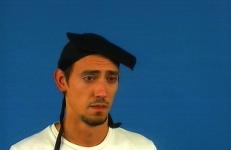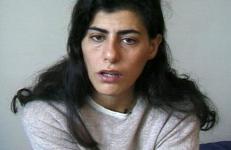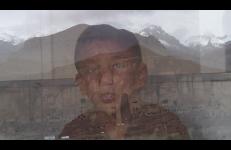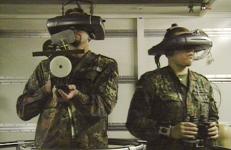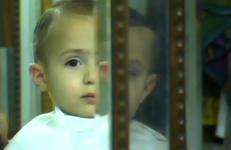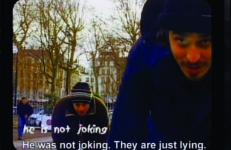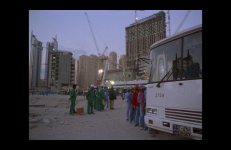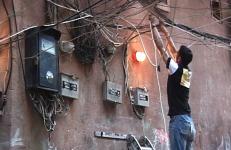Strip / Musrara is part of Assor's ongoing “Strip” series, set in Jerusalem’s Musrara neighborhood. It is an attempt to create a living map that is both collective and subjective – a plurality of combined perspectives. Not a map of the exact measurements of the neighborhood, but of the experience of moving through it, together and alone, locals and strangers, intersecting and drifting apart.
Middle East
A wistful film on the love of homeland.
Video artist Nurit Sharett recounts her childhood memories and converses with her Palestine-born parents who grew up in the British Mandate years. They both took part in realizing the Zionist dream of establishing the State of Israel, a dream now shattered before their eyes.
In 1966, the Syrian government's Ministry of Endowments solicited plans for a building to replace a 14th-century Mamluk mosque in Martyr's Square in the center of Damascus. A young architect proposed a design for a 5-star hotel and new mosque. In 1971, his plans were scrapped. In 1982, a building began to be built. Hospital? Parking garage? Military housing? The project--now called the Basel al-Asad Center--has been the subject of much rumor and speculation. As of 2007, the building remains unfinished.
In 1966, the Syrian government's Ministry of Endowments solicited plans for a building to replace a 14th-century Mamluk mosque in Martyr's Square in the center of Damascus. A young architect proposed a design for a 5-star hotel and new mosque. In 1971, his plans were scrapped. In 1982, a building began to be built. Hospital? Parking garage? Military housing? The project--now called the Basel al-Asad Center--has been the subject of much rumor and speculation. As of 2007, the building remains unfinished.
An oblique, albeit powerful documentary that examines the current conditions, politics, and economics of South Lebanon. The tape focuses on the social, intellectual, and popular resistance to the Israeli occupation, as well as conceptions of "the land" and culture, and the imperiled identities of the Lebanese people. Simultaneously, the tape self-consciously engages in a critique of the documentary genre and its traditions.
An oblique, albeit powerful documentary that examines the current conditions, politics, and economics of South Lebanon. The tape focuses on the social, intellectual, and popular resistance to the Israeli occupation, as well as conceptions of "the land" and culture, and the imperiled identities of the Lebanese people. Simultaneously, the tape self-consciously engages in a critique of the documentary genre and its traditions.
Tarlabaşı integrates performances of everyday movements and gestures as a direct response to the devastation caused by the centralized state sponsored urban renewal project in downtown Istanbul.
Dancer: Idil Kemer
Music: Cenk Ergün
Production: Yunus Demir
An episode from a Lebanese TV series entitled Image + Sound. Each episode in this groundbreaking program was based on paralleling TV news images alongside staged events. This episode was shot at the St. Georges church in Beirut before its renovation.
In the Bible, Abraham buys a cave from Ephron the Hittite as a burial place for his wife Sarah. The Cave of the Patriarchs, as it has come to be known, became the final resting place not only for Sarah, but for Abraham and their descendants as well. In Jewish mystical sources the cave is also a passageway back to the Garden of Eden. It is said that Adam and Eve are also buried there.
In the Bible, Abraham buys a cave from Ephron the Hittite as a burial place for his wife Sarah. The Cave of the Patriarchs, as it has come to be known, became the final resting place not only for Sarah, but for Abraham and their descendants as well. In Jewish mystical sources the cave is also a passageway back to the Garden of Eden. It is said that Adam and Eve are also buried there.
In 1959, Jean Rouch directed the film La Pyramide Humaine. Situated between fiction and documentary, Rouch’s work presents his attempts to initiate a debate between two groups of students from the Ivory Coast, a white group and a Black group. A precursor to cinéma vérité, this often forgotten film served as the starting point of The Four Chambered Heart.
Shot in Lebanon, Syria and Jordan, this essay uses transportation, video, and photography to examine images circulating in a historically charged, and presently war-torn and divided, Middle East. From images of camels in the desert to images of the Arab-Israeli conflict, the video looks at states of mind in relation to actual geographies. The video pays tribute to an unformatted and open-ended documentary approach, and examines modes of access to information such as travel, television and the Internet, while carefully displaying the resulting iconography.
This Is Not Beirut is a personal project that examines the use and production of images and representations of Lebanon and Beirut, both in the West and in Lebanon itself. It also records Salloum’s interactions and experiences while working in Lebanon, focusing on this representational process by a Westernized, foreign-born Lebanese mediator with cultural connections to and baggage from both the West and Lebanon.
This Was Home is comprised of three channels, which present three generations of the artist’s family. On one screen Levy presents her maternal grandfather, Karl Ribstein, another shows her father, Yossi Levy, and the third presents the artist herself. Levy documented each of these protagonists on a journey back to their childhood city and to the home where they grew up, which they had not revisited since having to leave it in their childhood.
This film is the result of an intimate time spent between the filmmaker, who lives today in Belgium, and his father who is a former political prisoner. It looks at the complex political system of Egypt under Nasser.
This title is only available on Radical Closure.
A film about people trying really hard to listen and people hardly listening.
Amidst growing discussions on the headscarf issue, the President of Turkey was holding the annual Republic Day Ball at the Presidential Palace. For the reception he sent one-person invitations to the members of the Parliament whose majority was held by the Islamic Democrats. This was his strategy to prevent their wives, who would naturally wear headscarves, from attending the night. I was outraged by this conservative secularism and wanted to express my personal protest, embodying the stress on the contemporary Islamic body. --Köken Ergun
An intimate dialogue with Soha Bechara, ex-Lebanese National Resistance fighter, in her Paris dorm room. The interview was taped during the last year of the Israeli occupation, one year after her release from captivity in El-Khiam torture and interrogation center (South Lebanon) where she had been detained for 10 years—six in isolation. Revising notions of resistance, survival, and will, the overexposed image of the survivor speaks quietly and directly to the camera—not speaking of the torture, but of separation amd loss; of what is left behind and what remains.
Out of the mouths of rural boys, finding the incomparable Mulla Nasrudin in Afghanistan.
Since the Gulf War in 1991, warfare and reporting it have become hyper-technological affairs, in which real and computer-generated images cannot be distinguished any more. With the aid of new and also unique archive material, Farocki sketches a picture of the relationship between military strategy and industrial production and shows how war technology finds its way into everyday use.
-- International Film Festival catalogue, Rotterdam (2004)
We will live to see these things... is a documentary video in five parts about competing visions of an uncertain future. Shot in 2005/06 in Damascus, Syria, the work combines fiction and non-fiction. Each section of the piece--the chronicle of a building in downtown Damascus, an interview with a dissident intellectual, documentation of an equestrian event, the fever dream of a U.S.
We will live to see these things... is a documentary video in five parts about competing visions of an uncertain future. Shot in 2005/06 in Damascus, Syria, the work combines fiction and non-fiction. Each section of the piece--the chronicle of a building in downtown Damascus, an interview with a dissident intellectual, documentation of an equestrian event, the fever dream of a U.S.
The filmmaker and his friend, both Lebanese, meet two Israelis their own age in Paris, and spend some playful time with them. While they play a game, they refer constantly and humorously to the war and to the frozen status quo between the two countries.
This title is only available on Radical Closure.
115 years later, a(nother) remake of the Lumiere Brothers pseudo-actuality film La Sortie des usines Lumière. This time around our factory is a job site, a construction site peopled by thousands of Southeast Asian laborers, a neo-Fordist architectural production site that manufactures skyscrapers like so many cars.
X-Mission explores the logic of the refugee camp as one of the oldest extra-territorial zones. Taking the Palestinian refugee camp as a case in point, the video engages with the different discourses — legal, symbolic, urban, historical — that give meaning to this exceptional space.




